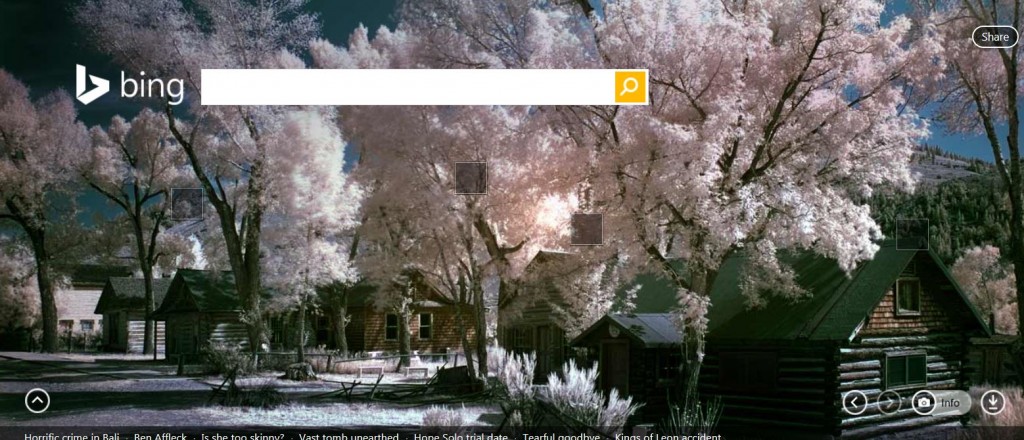Council of Eastern Forest Technician Schools Annual Meeting 2016
Georgetown, South Carolina
The Annual Meeting of the Council of Eastern Forest Technician Schools is fast approaching. Shown below is the schedule of events. There are a variety of airlines servicing either Myrtle Beach International Airport to the North or Charleston International Airport to the South of Georgetown, SC. We are equal distance from both. In addition, there is Amtrak service available in the area, although schedules may not be the most convenient.

Monday, July 25th
5:00 – 6:00pm Early check in
Tuesday, July 26th
7:00am Breakfast (provided @ motel)
8:30am Leave for kayak / canoe trip on Black River
12:00 – 6:00pm Annual Meeting check-in (motel)
7:00pm Supper (BBQ) & Social @ The Wildlife Pavilion on Campus
8:30 pm Executive Committee Meeting
Wednesday, July 27th
7:00am Breakfast (provided @ motel)
8:00am Depart for Tour – ArborGen’s Research Lab in Summerville, SC
10:00am Arrive @ ArborGen
ARBORGEN – A WORLDWIDE LEADER IN COMMERCIAL FORESTRY
 ArborGen is a leading producer of tree seedling products and one of the largest providers of conventional and technology-enhanced seedlings to the forestry industry. With a long history of tree improvement research and expertise in forestry, ArborGen is developing products designed to meet the challenges facing the global commercial forestry industry.
ArborGen is a leading producer of tree seedling products and one of the largest providers of conventional and technology-enhanced seedlings to the forestry industry. With a long history of tree improvement research and expertise in forestry, ArborGen is developing products designed to meet the challenges facing the global commercial forestry industry.
Through innovations in both conventional breeding and biotechnology, we develop high-value seedling products that significantly improve the productivity of a given area of land by enabling our customers to grow trees that yield more wood per acre with greater consistency and quality in a shorter period of time. These advanced and technology-enhanced products are designed to improve growth rates, yields, stress tolerance, uniformity, wood quality and processing efficiency of trees.
Combining superior nursery management practices and methods, conventional tree breeding, species selection, advanced tree improvement and biotechnology to produce trait-specific superior trees, ArborGen is working to ensure that our customers get the most out of every tree they grow.
12:30pm Lunch
1:30pm – Tour of Francis Marion National Forest – Carolina Bay Habitat
5:00pm Supper – Low Country Seafood Fare (Shrimp & Crabs and Alternatives)
7:30pm Cracker Barrel – possible topics Recruitment & Retention, 4-year Articulation, Accreditation
Thursday, July 28th
7:00am Breakfast (provided @ motel)
8:00am Tour of Tom Yawkey Wildlife Center (Boat trip??)
Background on the Tom Yawkey Wildlife Center
 Considered one of the most outstanding gifts to wildlife conservation in North America, the Tom Yawkey Wildlife Center was willed to the South Carolina Department of Natural Resources in 1976 by the late Tom Yawkey, owner of the Boston Red Sox. Composed of 31 square miles of marsh, managed wetlands, forest openings, ocean beach, Longleaf pine forest and maritime forest, the preserve is principally dedicated as a wildlife preserve, research area and waterfowl refuge.
Considered one of the most outstanding gifts to wildlife conservation in North America, the Tom Yawkey Wildlife Center was willed to the South Carolina Department of Natural Resources in 1976 by the late Tom Yawkey, owner of the Boston Red Sox. Composed of 31 square miles of marsh, managed wetlands, forest openings, ocean beach, Longleaf pine forest and maritime forest, the preserve is principally dedicated as a wildlife preserve, research area and waterfowl refuge.
In addition to protecting game species such as White-tailed deer and Eastern wild turkey, the Yawkey Center is a haven for nongame and endangered species. The diversity of habitats support over 200 species of birds, rivaling the variety and rarity documented at the Cape Romain National Wildlife Refuge located just to the south. An unusual number of raptorial birds frequent the area to rest during migration, to nest or feed. They include hawks, ospreys, peregrine falcons, golden and bald eagles.
The uplands on the Yawkey Center protect a diversity of plant species and provide habitat for small mammals such as raccoons, fox squirrels and otters. The federally endangered red-cockaded woodpecker also inhabits the longleaf pine uplands of the preserve.
Because the Yawkey Center’s beaches are undisturbed, they provide protected feeding and resting areas for various seabirds including the Brown pelican, Least terns and the federally threatened Piping plover as well as excellent nesting locations for the federally threatened Loggerhead sea turtle.
12:00pm – 1:00pm Lunch (provided)
1:30pm – 4:00pm Tour of Hobcaw Barony (Lee / Richard 843-546-4623)
History of Hobcaw Barony
A 16,000 acre research reserve, Hobcaw Barony is one of the few undeveloped tracts on the Waccamaw Neck. The Native Americans called it “hobcaw,” meaning between the waters. In 1718, the land became a colonial land grant or barony. Sold and subdivided into plantations, the land was part of profitable rice production until the beginning of the 20th century.
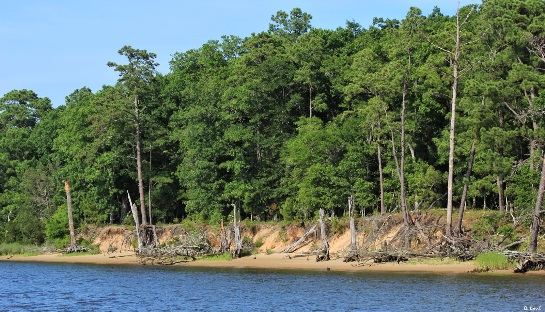 Bernard M. Baruch, Wall Street financier and adviser to presidents, purchased the property in 1905 for use as a winter hunting retreat. After 50 years, he sold all the land to his daughter Belle Baruch. At the time of her death in 1964, she created a foundation to manage the land as an outdoor laboratory for the colleges and universities in South Carolina.
Bernard M. Baruch, Wall Street financier and adviser to presidents, purchased the property in 1905 for use as a winter hunting retreat. After 50 years, he sold all the land to his daughter Belle Baruch. At the time of her death in 1964, she created a foundation to manage the land as an outdoor laboratory for the colleges and universities in South Carolina.
On site research facilities include Clemson University’s Belle W. Baruch Institute of Coastal Ecology and Forest Science, James C. Kennedy Waterfowl and Wetlands Conservation Center and the University of South Carolina’s Belle W. Baruch Institute for Marine and Coastal Sciences.
Although privately owned, Hobcaw Barony provides staff-guided access through tours and programs offered by the foundation and universities.
5:00pm Supper
6:00pm Business Meeting followed by social
Friday, July 29th
7:00am Breakfast (provided @ motel)
8:00am Depart for home or various locations
Contact Information: If you have questions or need to arrange pick up at one of the airports, please call Brian Clark @ Brian.Clark@hgtc.edu or Work: 843-520-1418, Home: 843-527-7570, Mobile: 843-359-9379.
Hotel – Quality Inn & Suites, 210 Church Street, Georgetown, SC 29440 / (843) 546-5656. The rate will be $89.99 / night. When making a reservation with the Hotel directly, use Group Name: HGTC Meeting and Group Acct. SC302.
Air Transportation
Myrtle Beach, SC – Allegiant Airlines, American Airlines, Delta Airlines, Elite Airways, Porter Airlines, Spirit Airlines, United Airlines, ViaAir (Berkley, WV), WestJet
Charleston International Airport, SC – American Airlines, United Airlines, Jet Blue, Southwest, Delta, Alaska Airlines (Seattle)
Rail Service – Amtrak Service to Florence, SC, Kingstree, SC or Charleston, SC. Silver Meteor / Palmetto Line Service with major stops in New York City, Philadelphia, Baltimore, Washington, DC, Richmond, etc. May not be the fastest way to travel, but some might want to review it as an option.
For more information, contact: Brian Clark @ Brian.Clark@hgtc.edu or 843-520-1418 daytime or 843-527-7570 evenings.
Meeting Registration Form
Name: _____________________________________________
College: ____________________________
Mailing or Street Address: _______________________________________________________
City: _______________________________
State / Province / Territory: _________________________
Zip or Postal Code: ___________________
Office Phone: ______________________________
Mobile Phone: _____________________________
Preferred Email for Meeting Announcements: _________________________________________________
Anticipated meeting out of pockets costs are $100.00 USD.
_____ I would like an alternative to the Shrimp & Crab Boil being offered on Wednesday evening.
_____ I plan on making the Tuesday, July 26th kayak trip on the Black River.

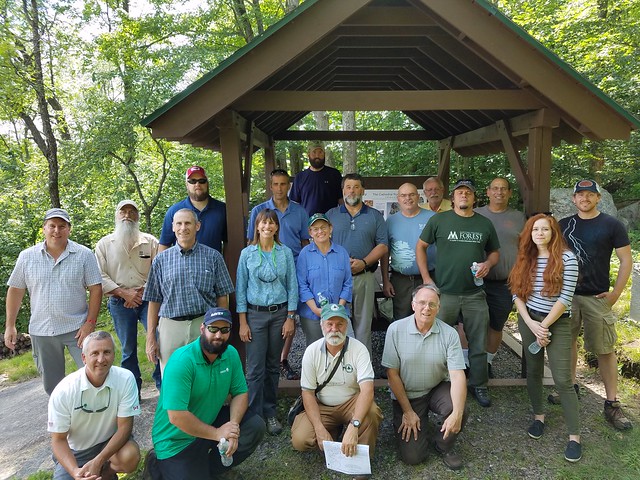
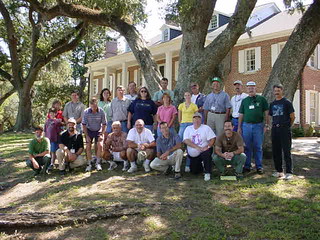

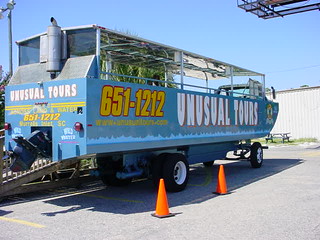


 ArborGen is a leading producer of tree seedling products and one of the largest providers of conventional and technology-enhanced seedlings to the forestry industry. With a long history of tree improvement research and expertise in forestry, ArborGen is developing products designed to meet the challenges facing the global commercial forestry industry.
ArborGen is a leading producer of tree seedling products and one of the largest providers of conventional and technology-enhanced seedlings to the forestry industry. With a long history of tree improvement research and expertise in forestry, ArborGen is developing products designed to meet the challenges facing the global commercial forestry industry. Considered one of the most outstanding gifts to wildlife conservation in North America, the Tom Yawkey Wildlife Center was willed to the South Carolina Department of Natural Resources in 1976 by the late Tom Yawkey, owner of the Boston Red Sox. Composed of 31 square miles of marsh, managed wetlands, forest openings, ocean beach, Longleaf pine forest and maritime forest, the preserve is principally dedicated as a wildlife preserve, research area and waterfowl refuge.
Considered one of the most outstanding gifts to wildlife conservation in North America, the Tom Yawkey Wildlife Center was willed to the South Carolina Department of Natural Resources in 1976 by the late Tom Yawkey, owner of the Boston Red Sox. Composed of 31 square miles of marsh, managed wetlands, forest openings, ocean beach, Longleaf pine forest and maritime forest, the preserve is principally dedicated as a wildlife preserve, research area and waterfowl refuge. Bernard M. Baruch, Wall Street financier and adviser to presidents, purchased the property in 1905 for use as a winter hunting retreat. After 50 years, he sold all the land to his daughter Belle Baruch. At the time of her death in 1964, she created a foundation to manage the land as an outdoor laboratory for the colleges and universities in South Carolina.
Bernard M. Baruch, Wall Street financier and adviser to presidents, purchased the property in 1905 for use as a winter hunting retreat. After 50 years, he sold all the land to his daughter Belle Baruch. At the time of her death in 1964, she created a foundation to manage the land as an outdoor laboratory for the colleges and universities in South Carolina. 